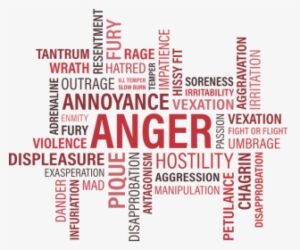
In the final part of this ‘trilogy’ of difficult conversations articles I want to look at anger. Firstly, it’s worth saying that this may not just be the anger of the other person it may be your sense of anger. That feeling that you are becoming angry. That feeling that you are becoming frustrated. Anger often occurs in accelerating cycles both within an individual and between people. So once one person gets angry both people get angry.
First principle when in doubt get out. Sometimes it’s simply better to end a conversation or move the conversation onto something different before returning to it at a later time.
As Groucho Marx once quipped speak when you’re angry and you will make the best speech you will ever regret.
We become angry when there is someone trying to interfere in the space between us and what we intend to do – someone between us and our peace. When we believe that interference is deliberate the impact is stronger. And I think it’s fairly safe to say that the people we work with consider our interference in their worlds to often be deliberate and unwelcome.
What can you do to stop feeling angry or what can you do to stop the other person feeling angry? This is a good question – because of how quickly we react neurologically when someone displays their anger something has already gone badly wrong. Something is not beginning to escalate something has already escalated.
This shows the reality that anger is an innate capacity. It’s required from an evolutionary point of view for self-protection. So, when we feel threatened, we get angry. Anger signals intent. The person is getting angry to protect themselves
Sometimes it’s a behaviour learned culturally. Some observe growing up that getting angry is something people do when they’re trying to assert themselves. Sometimes becoming angry elevates a person’s status – they are listened to. So, it can be experience driven behaviour – a way to cope. Anger is the manifestation of your own nervous system.
Anger blinds you and derails conversation. Anger limits your ability to remain civil. This emotion limits how you access and process information. Once someone us angry, they are not listening or responding rationally they are responding angrily. It’s almost pointless to continue – we need to build those golden bridges from the second article. This is a way to de-escalate the anger and help the other person not feel as though there backing down in some way – not losing face. The things we’ve already talked about – the relationship that you have – the use of the words we and us – will all help to do this.
Do’s and don’ts
- don’t meet anger with anger
- don’t blame – discuss
- don’t make negative assumptions about the other persons intentions or motivations or the source of their anger
- do monitor closely yourself and the other person for signs of anger
- do change the subject
- do reframe the conversation
- do pause – take a breath. The goal of pausing in the heat of the moment is to disconnect the automatic link between emotion and action – it serves to slow it down – slow down. When you slow down you calm down
- do bite your tongue- do not counterattack- particularly important here is keeping control of your facial expressions and body language
- listen listen listen
- do not deny the situation is tense. In many circumstances acknowledging the tension or the negative feelings or the frustrations is helpful. Denying these things is seldom helpful
- after a tense moment do try to make an empathy statement. This helps foster deeper connexion. For example – I hear you – this must be hard
- ultimately make your safety a priority – walk away if you have to
When you think about anger think not only about the other persons but also yours
This is the third in a series of 3 articles
The others are at the links below
Difficult Conversations – some initial thoughts
Difficult Conversations – Advanced Skills

